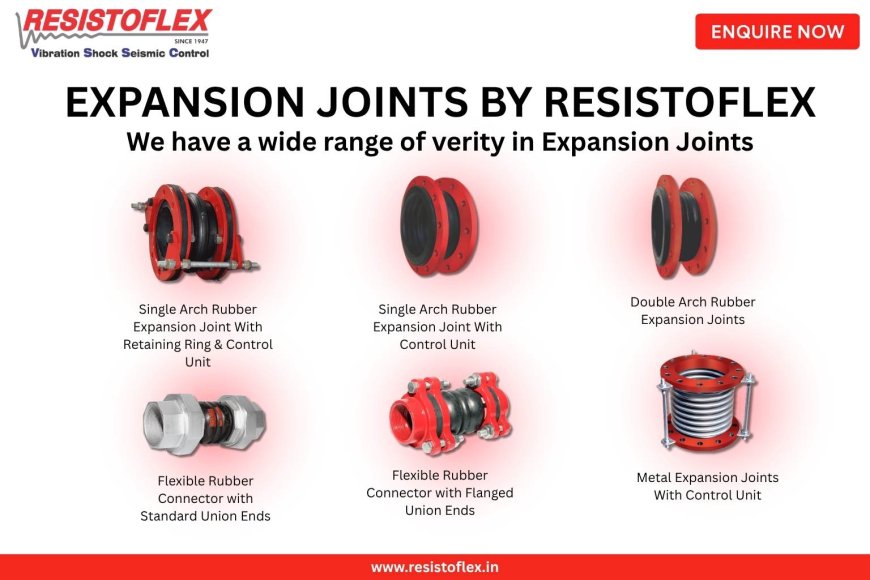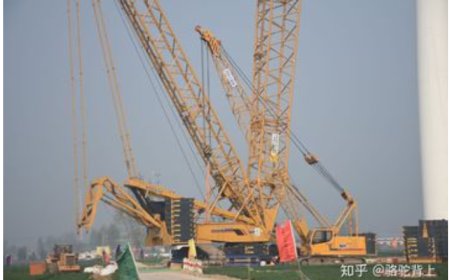What is an Expansion Joint? Types, Applications, and Why It’s Crucial for Industrial Piping
Discover what an expansion joint is, its types, design, and installation. Learn how Resistoflex solutions protect industrial piping from stress and vibration.

In modern industrial infrastructure, pipelines are expected to endure a variety of stresses — from thermal expansion and vibration to pressure fluctuations and seismic movement. To manage these challenges and prevent structural damage, engineers rely on a critical yet often underestimated component: the expansion joint.
This article explains what an expansion joint is, its various types, key applications, and why it plays a vital role in ensuring the durability of piping systems. You will also find insight into high-performance expansion joint solutions offered by Resistoflex—a trusted name in vibration, noise, and movement control.
Explore all Resistoflex Expansion Joints
What is an Expansion Joint?
An expansion joint is a flexible connector that compensates for movement, vibration, and misalignment in piping systems. These joints absorb thermal expansion and contraction, reduce mechanical stress, and isolate vibration — making them essential for maintaining structural integrity.
Expansion joints are commonly used in pipelines that carry fluids or gases under pressure across long distances, particularly in industries where temperature changes and system movement are routine.
Key Expansion Joint Types Offered by Resistoflex
Resistoflex provides a comprehensive range of expansion joints, each engineered for specific movement types and industrial requirements:
Metallic Expansion Joint
Suitable for high-temperature, high-pressure lines, metallic expansion joints are commonly used in power plants, refineries, and thermal systems requiring thermal expansion joint functionality.
Rubber Expansion Joint
Manufactured from reinforced elastomers, rubber joints offer excellent flexibility and are ideal for HVAC systems, chemical plants, and general industrial piping. They are widely used for expansion joint in piping systems where vibration and noise control are essential.
Fabric Expansion Joint
These are used in low-pressure ducting systems such as those found in cement and thermal power plants. Fabric joints offer lightweight flexibility, ideal for absorbing large-scale movements in exhaust gas systems.
Universal Expansion Joint
Designed to handle axial, lateral, and angular movements simultaneously, these are versatile solutions for pipelines facing complex directional stresses.
Hinged and Gimbal Expansion Joints
These structural joints are particularly useful in bridge expansion joint applications and steam systems, allowing angular movement while controlling thrust forces.
Pressure Balanced Expansion Joint
These joints absorb movement without imposing pressure thrust on adjacent equipment or anchors, making them suitable for turbine exhausts and critical vessel connections.
Each of these types is developed to meet specific industrial requirements. Learn more on the product page.
Expansion Joint Design: Engineering That Matters
Effective expansion joint design takes into account multiple parameters, including temperature range, pressure levels, movement type, space constraints, and chemical compatibility.
Whether you're choosing between metal vs fabric expansion joint or need a custom design for aggressive media or high-vibration environments, Resistoflex offers technical expertise and proven engineering.
Bridge Expansion Joint Design and Infrastructure Safety
Bridge expansion joint design is critical to accommodate structural movement due to thermal fluctuations, load variation, and seismic activity. Our hinged and gimbal expansion joints are commonly deployed in bridges and large concrete structures to ensure smooth, controlled flexibility.
Expansion Joint vs Control Joint: A Technical Distinction
While often confused, the two serve different purposes:
-
Expansion joints absorb actual movement and pressure in systems such as pipelines and ducts.
-
Control joints are used in concrete construction to manage crack formation by creating intentional weak points.
For dynamic systems, especially in mechanical or fluid transport applications, expansion joints are the correct solution.
Expansion Joint Installation: Best Practices
Accurate expansion joint installation is critical to product performance and system longevity. Key guidelines include:
-
Install the joint at neutral length with no pre-stress.
-
Ensure proper alignment before tightening flanges.
-
Use control rods or tie rods where applicable.
-
Maintain adequate clearance for joint movement.
For technical assistance, visit the Resistoflex Expansion Joint section.
Thermal vs Seismic Expansion Joint: Application-Based Selection
-
Thermal expansion joints are engineered to absorb gradual elongation and contraction due to temperature changes.
-
Seismic expansion joints are designed to handle sudden, large-scale displacements caused by earthquakes or mechanical shocks.
Both solutions are offered by Resistoflex, depending on your industry and structural risk profile.
Expansion Joint Material Selection
The right expansion joint material selection is essential to ensure resistance against pressure, temperature, and chemical exposure. Common materials include:
-
Stainless Steel: For high pressure and heat resistance
-
EPDM and Neoprene: For flexibility and chemical compatibility
-
PTFE-lined joints: For corrosive media and aggressive chemicals
Our team provides expert consultation to help clients select materials that align with their specific operating environment.
Expansion Joint Maintenance: Ensuring Long-Term Reliability
Proactive expansion joint maintenance enhances the reliability and performance of the entire system:
-
Perform regular visual inspections for cracks, bulges, or leaks.
-
Check fasteners and control rods for proper tension.
-
Replace aging joints to prevent system failure.
Resistoflex joints are designed with longevity in mind, but routine checks are recommended for optimal safety and performance.
Conclusion
From HVAC plants to bridges and refineries, expansion joints play a central role in maintaining system stability and performance. Whether you're dealing with thermal vs seismic expansion joint needs or evaluating the best expansion joint design for your project, selecting the right product and partner is essential.
Resistoflex delivers engineered expansion joint solutions trusted across multiple industries for their durability, precision, and customizability.
Visit our product page to explore the full range:
www.resistoflex.in/expansion-joint
For technical guidance or product enquiries, reach out to our experts through the Enquiry section.

































